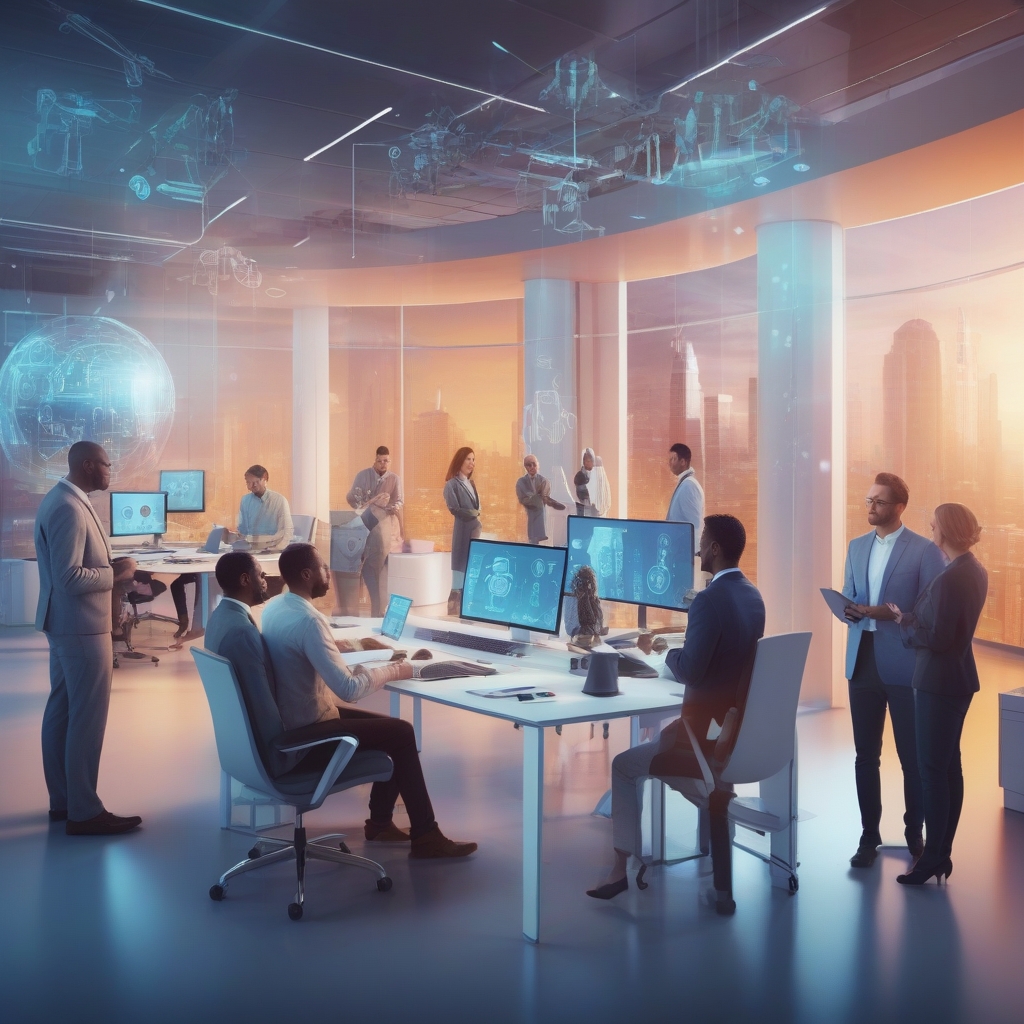Introduction
Artificial Intelligence (AI) has been a hot-button topic, especially when discussing its impact on the job market. The creator of one of the world’s most powerful AIs recently offered insights into how AI might shape the future of employment. Far from dismissing human workers, their perspective provides a nuanced understanding of how AI and humans might coexist in the evolving job landscape.
The Evolution of AI: From Hype to Reality
AI has undergone exponential advancements over the last decade. What began as a series of experiments in machine learning has now evolved into complex systems capable of performing tasks that were previously thought to be exclusively human domains. However, **this rapid development has spurred concerns** about the potential for AI to replace human jobs.
A Historical Perspective
To better grasp the future, it’s helpful to look back at past technological advancements. The Industrial Revolution offers a compelling case study. **Machines did displace certain jobs**, but they also created new opportunities, elevating overall productivity and economic growth. Similarly, AI is not a zero-sum game; it’s likely to redefine roles rather than eliminate them entirely.
AI’s Potential to Complement Human Jobs
The AI creator emphasizes that the collaboration between AI and humans could lead to a symbiotic relationship. Here are some ways AI can augment rather than annihilate human tasks:
Enhanced Decision-Making
AI excels in data analysis and pattern recognition, areas where human fatigue can lead to errors. By **leveraging AI algorithms**, professionals in fields like healthcare, finance, and marketing can make more informed decisions. For instance, AI can analyze vast amounts of medical data to offer diagnostic suggestions, enabling doctors to focus on patient care rather than data crunching.
**Key Points**:
Automation of Routine Tasks
By offloading repetitive tasks to AI systems, humans can concentrate on creative and strategic activities. Customer service chatbots, for instance, can handle common queries, freeing up human agents to deal with more complex issues.
**Pros of AI Automation**:
Jobs at Risk: Fiction vs. Reality
It’s tempting to assume that AI will lead to widespread job displacement. However, the real impact is far more nuanced. According to the AI creator, while some jobs are at risk, many others will emerge.
Jobs Susceptible to Automation
Certain roles are more vulnerable to being automated by AI:
Emerging Job Roles
Conversely, AI will generate entirely new roles that didn’t exist a decade ago, such as:
The Need for Skill Enhancement
As AI reshapes the job landscape, the necessity for **reskilling and upskilling** becomes crucial. Educational institutions and corporations must invest in training programs to equip workers with the skills required to collaborate effectively with AI systems.
Critical Skills in the AI Era
Professionals will need to focus on developing skills that complement AI capabilities:
Public Policy and AI Integration
Government policies will play a pivotal role in facilitating a smooth transition to an AI-integrated job market. Comprehensive regulations can help in **balancing economic growth with social welfare**.
Regulatory Frameworks
Governments must establish:
Conclusion
The future of jobs is not an ‘AI vs. Humans’ scenario but a collaborative endeavor. As the creator of the world’s most powerful AI suggests, the integration of AI in the workforce will redefine roles and create new opportunities. Both AI and human skills are indispensable in this evolving landscape. Through ongoing education, adaptive policies, and a focus on collaboration, society can harness the power of AI to create a more prosperous, efficient, and equitable future for all.
**In Summary**:
As we move forward, the key will be to embrace the possibilities while preparing to meet the challenges, ensuring that both humans and AI can contribute meaningfully to the future of work.

Leave a Reply